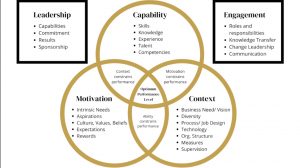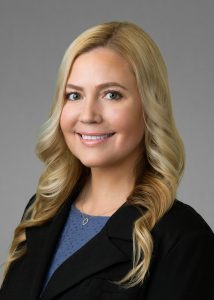By Donald Barnhart and Katie-Rose Herd
What’s so hard about evolving into a more active, nimble, and sophisticated commodity trading organization that relies on a robust Energy Trading and Risk Management (ETRM) system? (Energy trading and risk management [ETRM] systems involve commercial decision making and market execution using an integrated system that enables data exchanges among trade floor, operations, credit, contract and accounting functions.) For starters, doing everything better and faster. Ensuring the sustainable success of any trading and risk transformation requires transforming capability and processes across the front-, mid-, and back-office. You not only have to perform all your processes faster, more accurately, and more efficiently but you also have to operate in new ways demonstrating new capabilities. Many companies look to transform their capabilities in:
- Position management
- Origination
- Derivatives
- Risk analysis
- Problem-solving
While you simultaneously improve the speed, accuracy, and efficiency of:
- Recording and updating deals
- Entering and updating nominations
- Ticketing and actualizing movements
- Resolving front, mid, and back-office issues
The marketplace and technology innovations are propelling the market forward at a faster and faster pace. Many companies are working to accelerate their trading and risk activities to stay abreast of the dynamic market. To make better decisions, companies are moving away from monthly data reconciliations and settlements to a more frequent, near real-time dataset. However, transitioning to a new ETRM system to support this change can be a difficult and cumbersome process. Getting experienced staff to operate in new ways can be challenging. Typical problems encountered include inaccurate trade entry, untimely nominating, and the slow reconciliation of inventory which lead to inaccurate positions and risk reports.
The best traders, the best risk policies, the best schedulers, and the best systems in the world aren’t enough to truly be successful (although that would get you a LONG way there!). The organization has to recognize how each role directly contributes to commercial excellence. So, how do you make this happen? You execute sound change management practices in a new way.
ETRM Change Management
The Association of Change Management Professionals (ACMP) defines change management as “the practice of applying a structured approach to transition an organization from a current state to a future state to achieve expected benefits.”
Change management is needed when moving your organization into the future building new capabilities and processes. Project management will help you apply the right knowledge, skills, tools, and techniques to meet project requirements, including the delivery of a quality solution on time and within budget. But great project management will not transform your people. Good project management includes good change management to build and reinforce new capabilities in the organization and its employees. If people don’t understand the change, don’t feel comfortable with the change, or simply don’t want to change, you will be unable to realize the expected benefits.
There are many tools in a typical organizational change management (OCM) toolkit to help facilitate ETRM-related change. These include:
- Leadership communications
- New policies and procedures
- Change impact assessments
- Training plans and materials
- Communication plans
- New process designs
- Role analysis
- Digital adoption platforms
- Change optimization plans
However, executing change activities does not guarantee success. We have all seen statistics about how projects and MandA activities do not usually reap the intended benefits. HOW you implement your change activities and how you engage the organization makes a critical difference. Three considerations for increasing your enterprise-wide change management success include:
- Addressing Change Holistically – Analyzing organizational change and individual stressors to prioritize strategic initiatives and maintain strategic alignment for the duration of the project.
- Driving Change in the Center – Institutionalizing the change within the organization through the center to thoroughly engage the workforce who make change happen.
- Enabling Change Emergently – Expecting and planning change activities during and after the typical change implementation window to deliver support at the point of need.
About the Experts
Donald Barnhart is a Director in Opportune LLP’s Process and Technology practice based in Houston. Don has over 25 years of experience in change management consulting in the energy industry with Opportune, 2Develop, and Accenture, with a focus on energy trading and risk management. Don has worked with integrated supermajors, midstream companies, and independent trading firms. All his change projects drive organization performance improvement, implement strategic initiatives, and foster cultural change. Don holds an M.A. in Instructional Systems Design from the University of Maryland, Baltimore County, and a B.S. in Elementary Education from the University of Delaware.
Katie-Rose Herd is a Director in the Process and Technology practice at Opportune LLP. She has over 10 years of experience in the energy industry with an emphasis on oil and gas where she defines, selects, and implements energy trading and risk management solutions and business process resolutions that further enable effective management of clients’ commodities portfolios. Katie-Rose specializes in midstream and downstream offerings and has experience in front-, middle- and back-office with her involvement in the end-to-end trading lifecycle. In addition, she provides overall support for clients within their commodity trading organization. Katie-Rose has a B.A. in Economics from the University of Texas at Austin and a McCombs Business Foundations Certificate.














